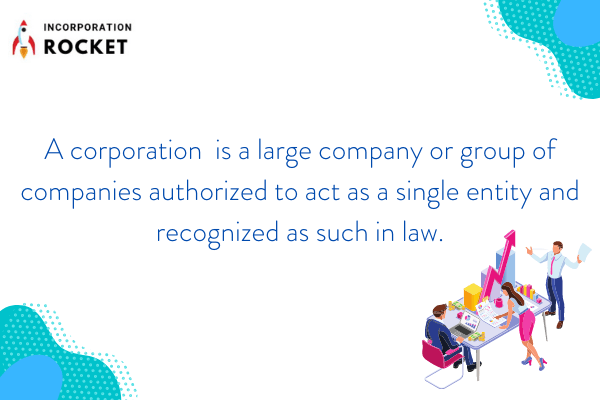- Small businesses account for over 99% of all enterprises in the United States
- More than 69% of entrepreneurs in the United States started their businesses at home
- In order to qualify as a small business, less than 500 people should be employed
Q2 2021 hedge fund letters, conferences and more
According to US Census Bureau data, 72.5% of employer C corporations in 2017 (latest data) had fewer than 10 employees, 84.6% had fewer than 20 employees, 96.2% had fewer than 100, and 98.9% had fewer than 500 workers.
Forming a corporation takes a significant amount of time and planning, as well as a few registration fees. Before you begin with your company setup, you should be certain that the corporation is the right entity for you.
Why A Corporation?
The primary advantage of a corporation over other entity types is the ability to raise funds through the issuance of stock. However, it's important to understand that because stockholders can vote on how the company is run, you're essentially handing over some of your decision-making power to someone else. If you want to retain complete control, an LLC or another entity type may be a better option. Having others share in the responsibility may take some weight off your shoulders.
Steps To Forming A Corporation
-
Choose Your Corporation Name
This is the first and most important step. Choose a name that stands out and is unique to your business. Make sure that it is not copied from another business. There are certain state requirements to choosing a name for your business.
Your company name must include the words "corporation," "company," "incorporated," "limited," or an abbreviation of one of these terms. Your company's name must be distinct from any other businesses in your state. This frequently includes reserved names for states. Without permission, you may not use the words "bank," "trust," "trustee," "credit union," or similar words in your name. Put a lot of time and effort into choosing the correct name, this may save you from getting stuck between legal red tape. If you want to have a website for your corporation you should also make sure that the URL is available, having a catchy name but no website to match is useless.
-
Choose Or Hire A Registered Agent
There are three ways to complete this step: one of the owners can serve as the company's registered agent, a friend or family member may be appointed as a registered agent or a registered agent service can be hired. A registered agent is a person or entity appointed by an LLC or corporation to accept service of process, government correspondence, and compliance documents on behalf of a business. If you choose to appoint a personal agent, the person needs to be 18 years or older, have a physical address in the same state as where the corporation is based, and be available to receive correspondence during the set out operating hours of the company.
-
Conduct An Operational Meeting
The following tasks should be discussed in an operational meeting during this step:
- Complete and sign the articles of incorporation
- Bylaws must be created and approved
- Choose your first director (s)
- Decide on your share structure.
- Make an Incorporator's Statement
After this meeting is conducted, corporate bylaws should be set up. Bylaws are the rules that govern your organization and how it is to be run. Consider the bylaws to be your corporation's constitution. It states the rules and priorities for all parties involved. Corporate bylaws cover everything from the governance structure of the corporation, including the roles of directors and officers, meeting procedures, voting procedures, and the election of officers or directors, how records will be kept and managed, and how disagreements and disputes will be resolved?
-
Filing Of Formation Documents
Formation documents differ in every state. Make sure to do enough research on the requirements of the state you want to form your corporation in. You will have officially formed a corporation once the documents are approved. Most states make the formation documents available online, while others require you to create your own. This document should include the name of your corporation, service agent name, and street address as well as how many shareholders the corporation has.
-
Get An EIN
The federal government uses an Employer Identification Number (EIN) or Federal Tax Identification Number (FTIN) to identify a business entity. It is essentially the company's social security number. This number can be obtained for free by the business owner after the corporation is formed. The EI will be used to establish a business bank account for the company, in terms of federal and state taxation and when hiring workers for the company
Final Thoughts
Which entity type to form is one of the most important decisions you'll make for your business, but selecting the right one can be difficult. Knowing the advantages and disadvantages can help you make a more informed decision. Overall, corporations are a popular entity type for a reason: they provide entrepreneurs with a formal business structure that is ready to grow alongside your company.














